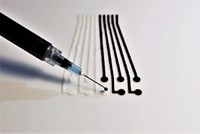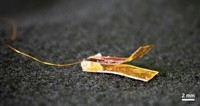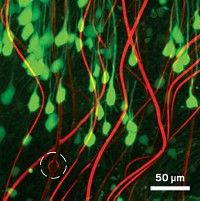Advertisement
Grab your lab coat. Let's get started
Welcome!
Welcome!
Create an account below to get 6 C&EN articles per month, receive newsletters and more - all free.
It seems this is your first time logging in online. Please enter the following information to continue.
As an ACS member you automatically get access to this site. All we need is few more details to create your reading experience.
Not you? Sign in with a different account.
Not you? Sign in with a different account.
ERROR 1
ERROR 1
ERROR 2
ERROR 2
ERROR 2
ERROR 2
ERROR 2
Password and Confirm password must match.
If you have an ACS member number, please enter it here so we can link this account to your membership. (optional)
ERROR 2
ACS values your privacy. By submitting your information, you are gaining access to C&EN and subscribing to our weekly newsletter. We use the information you provide to make your reading experience better, and we will never sell your data to third party members.
Analytical Chemistry
Probe Delivers Fluids, Light To Brain
Neuroscience: Thin, flexible optofluidic device causes minimal tissue inflammation
by Judith Lavelle
July 27, 2015
| A version of this story appeared in
Volume 93, Issue 30
Collaboration between neuroscientists and materials scientists has yielded a new minimally invasive neural probe and wireless device that delivers liquid pharmaceuticals and light stimulation to brain tissue in mice and rats (Cell 2015, DOI: 10.1016/j.cell.2015.06.058). At about 80 µm thick and 500 µm wide, the soft, flexible polydimethylsiloxane (PDMS) probe caused a less severe inflammatory response than did conventional metal cannulas and optic fibers. The system, mounted on a rodent’s head, pumps fluids from four reservoirs through four 10-µm-wide channels deep into brain tissue. A cellular-scale LED array on the transparent probe allows for photostimulation. In one experiment, rodents received an opioid agonist through the device that caused them to spin in circles—a behavior that stopped when the device switched to delivering a control substance. The researchers, led by electrical engineer Jae-Woong Jeong of the University of Colorado, Boulder; Washington University in St. Louis neuroscience graduate student Jordan G. McCall; and John A. Rogers of the University of Illinois, Urbana-Champaign, say the wireless optofluidic system may help neuroscientists study the brains of freely moving animals with less animal-researcher interaction, which can skew results.





Join the conversation
Contact the reporter
Submit a Letter to the Editor for publication
Engage with us on Twitter